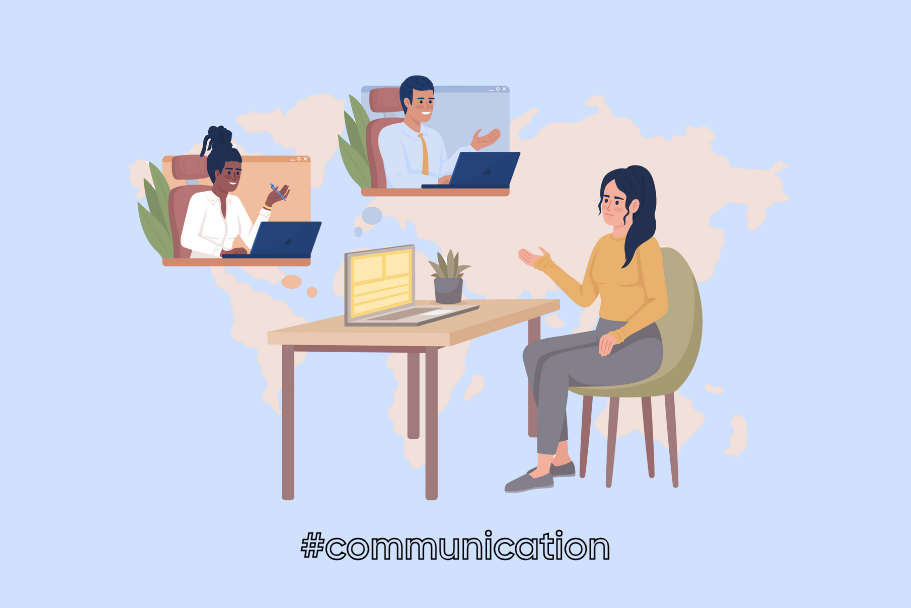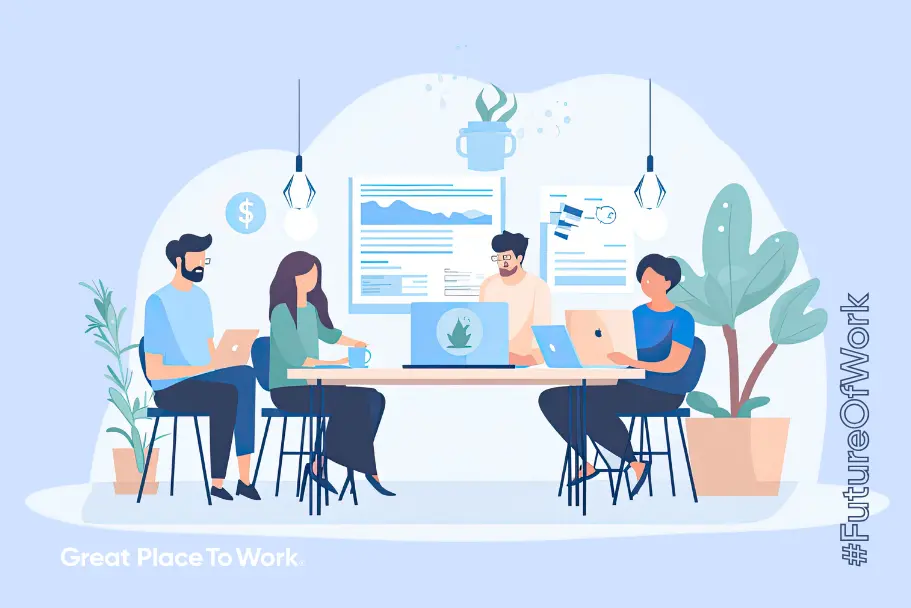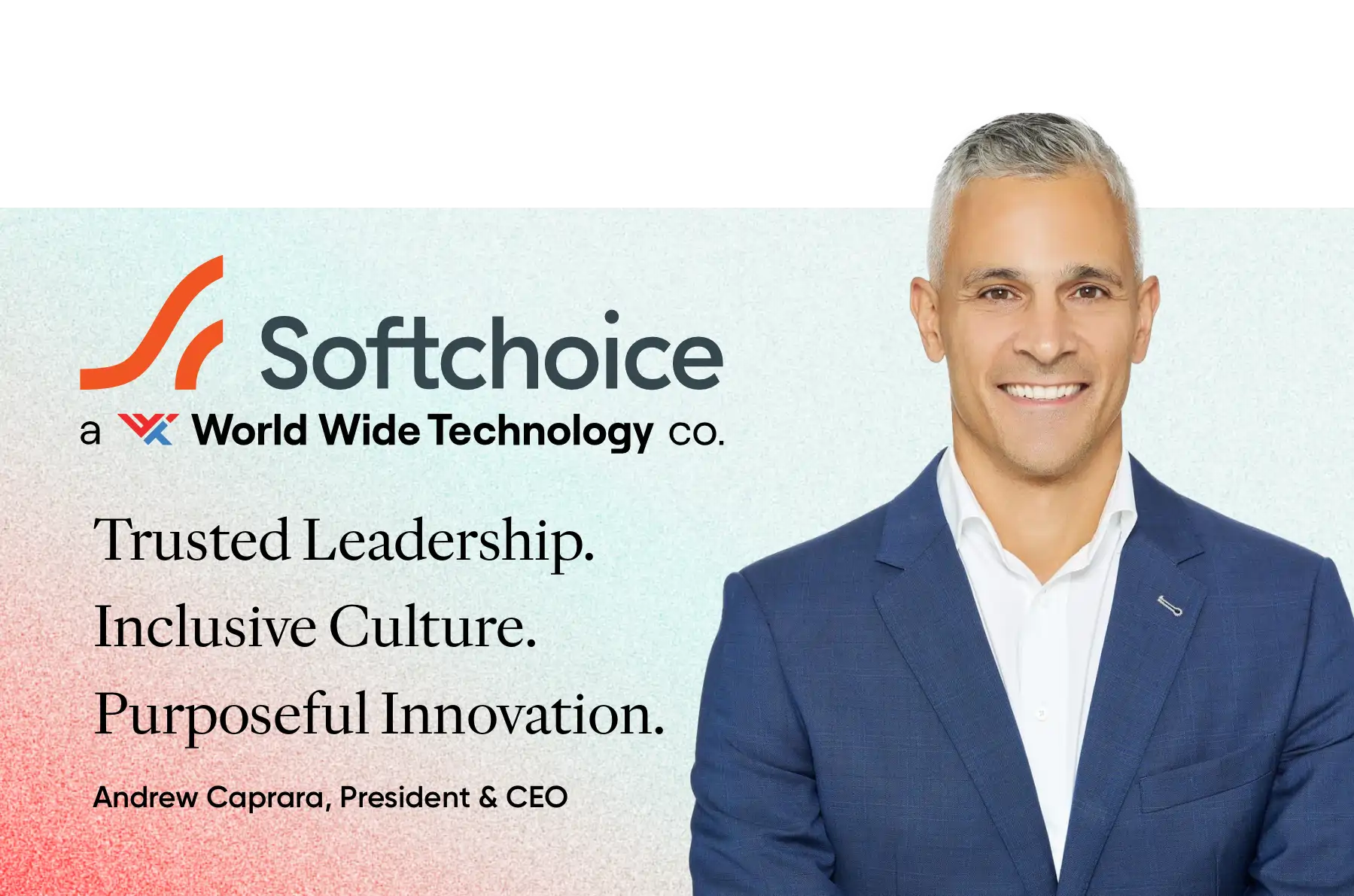
Company Culture, Employee Engagement , Leadership
Key Takeaways:
- Leadership matters most — trust, fairness, clarity, and belonging are the pillars of effective leadership in any work setting.
- Trust and fairness drive performance — organizations that lead with transparency and consistency see stronger retention, innovation, and results.
- Communication is a culture — clear expectations, consistent feedback, and recognition build alignment and connection.
- Belonging and clarity fuel engagement — when employees feel included and understand their role in bigger goals, they show greater commitment and purpose.
The last few years have shown us that work can take many forms—remote, hybrid, and in-office. While the settings may differ, the core expectations from employees remain the same: people want clarity, fairness, connection, and purpose in their work.
That’s why leadership today is less about where people work and more about how leaders build trust and fairness across different contexts. Whether your team is in the office every day, fully distributed, or somewhere in between, the lessons from flexible work carry forward: great leadership is about creating environments where people can thrive.
So how do organizations maintain trust, accountability, and results across all settings? The answer begins with rethinking what it means to lead with intention.
Rethinking Control: Why Trust Is the Foundation
Work today is not just about physical location—it’s about how people relate to their jobs and leaders. Traditional oversight models—those built on face time or proximity—don’t always guarantee results. Instead, trust becomes the backbone of productivity in every environment.
Trust is built through consistency, transparency, and follow-through. Employees need to believe leadership will do what they say, communicate clearly, and treat people fairly—whether interactions happen in-person or virtually.
Strong leaders design systems that encourage ownership and open communication. They balance freedom with structure, giving employees confidence that their contributions are valued.
This approach isn’t just about values—it’s backed by business outcomes. Companies that lead with trust see measurable advantages in retention, innovation, and financial performance. A recent report illustrates how high-trust workplaces consistently outperform competitors in resilience and revenue, especially during times of market disruption (The Business Case for High-Trust Workplaces, 2024).
Communication Isn’t Just a Tool—It’s a Culture

One of the most common breakdowns in remote teams is unclear or inconsistent communication. Not knowing when, where, or how to share information can leave people feeling isolated or out of the loop.
It’s not just about platforms—it’s about creating shared agreements around communication. This includes setting expectations for response times, meeting frequency, and decision-making processes.
Leaders who succeed treat communication as a culture, not a checklist. Whether in office or online, they make space for team rituals that keep people connected and create feedback loops that show employees their voices matter.
Visibility Without Surveillance
In all work settings, it’s possible for achievements to go unnoticed. Some employees may feel they need to “prove” their efforts; others may worry about missing opportunities.
That’s why recognition and access must remain equitable. Performance should be evaluated on outcomes and contributions—not hours or visibility.
Providing regular feedback, acknowledging contributions in meetings, and sharing progress openly help people feel seen and appreciated—strengthening trust across the board.
Fairness Is the Differentiator
Fairness impacts retention, performance, and morale in every environment. Leaders must ask themselves:
- Do all team members have equal access to mentorship and growth opportunities?
- Are project assignments distributed equitably?
- Are policies applied consistently?
Fairness also includes clarity. When employees understand how decisions are made—even if they don’t agree—they are more likely to feel respected.
Survey data supports this. At top Certified™ workplaces, 83% of employees say managers avoid playing favourites, compared to just 45% in typical Canadian workplaces (Great Place To Work® 2021 Global Employee Engagement Study). The gap reflects how strongly fairness drives trust.
Belonging—Intentionally

Belonging doesn’t happen automatically, whether employees sit together in an office or log in from home. Leaders must be intentional about creating inclusive practices: rotating meeting facilitation, celebrating milestones, and being mindful of different needs when scheduling.
These practices may seem small, but they send a clear message: You belong here.
At top Certified™ workplaces, 88% of employees say they look forward to coming to work, compared to just 51% at typical Canadian companies (Great Place To Work® 2021 Global Employee Engagement Study). Belonging directly fuels motivation and morale.
Leading with Clarity
Without clear goals and communication, employees can quickly feel lost—no matter where they work.
Clarity means setting objectives, revisiting them often, and explaining changes when they happen. Regular check-ins, documented processes, and transparent project tracking help teams stay aligned without over-relying on proximity.
Flexibility as Responsibility

Flexibility today doesn’t just mean working from home—it means structuring work in a way that supports purpose, productivity, and balance.
The most effective organizations are deliberate about how and when people come together. They emphasize “purpose-driven in-person time” for key activities like onboarding, collaboration, and innovation (MIT Sloan Management Review, 2024).
When treated as a responsibility—on both sides—flexibility builds sustainable systems where people can thrive.
A Culture Built on Feedback
Assumptions can quickly fill the gaps left by silence. That’s why feedback loops—surveys, retrospectives, one-on-ones—are essential.
Leaders who welcome and act on feedback demonstrate attentiveness, reinforcing trust regardless of location.
Final Thoughts
The workplace will continue to evolve—but the leadership values that matter most remain constant: trust, fairness, clarity, and belonging. By applying these principles consistently across remote, hybrid, and in-office settings, organizations can build cultures where employees feel seen, respected, and motivated to do their best work.
The future of work is not about location—it’s about leadership that balances freedom with structure, accountability with trust, and connection with purpose.
Tools & Resources
- Trust Index™ Employee Feedback Survey: This research-backed survey helps you measure trust, fairness, and engagement across distributed teams—ideal for identifying what’s working and what’s missing in your hybrid culture.
- Great Place To Work® Certification: Certification offers external validation of your culture based on employee feedback. It also provides benchmarks to assess how trust and flexibility compare to top-performing organizations.
- Employee Engagement: Explore strategies and data to improve emotional commitment and workplace satisfaction. This resource supports leaders in building cultures where people stay connected and motivated—no matter where they work.
- Leadership Development: Leadership development programs strengthen capabilities in remote management, fairness, and clarity—essential traits for guiding flexible teams with purpose and accountability.
Feedback
We value your feedback! Your insights are crucial to helping us create meaningful content. Did the strategies in this article inspire new ways to lead flexible or remote teams with trust and impact in your organization? Are there specific challenges you'd like us to address? Share your suggestions or ideas with us. Together, we can develop resources that truly make a difference. Have feedback? Fill out this form by clicking here.
Get Certified
Want to know how your people feel about your flexible work environment? Get Certified today and learn the answer to this question and gain many more insights along the way.






